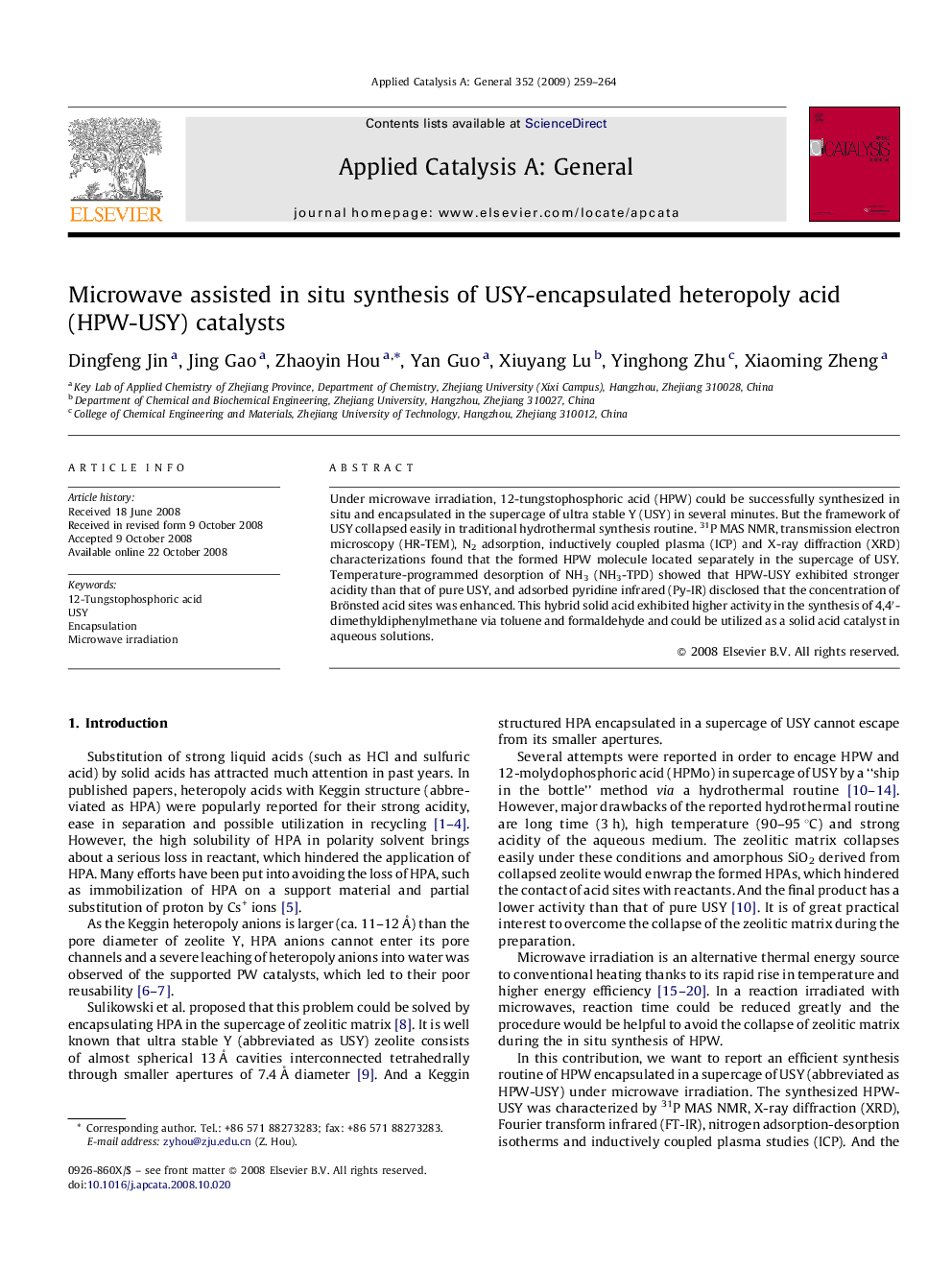| Article ID | Journal | Published Year | Pages | File Type |
|---|---|---|---|---|
| 43177 | Applied Catalysis A: General | 2009 | 6 Pages |
Under microwave irradiation, 12-tungstophosphoric acid (HPW) could be successfully synthesized in situ and encapsulated in the supercage of ultra stable Y (USY) in several minutes. But the framework of USY collapsed easily in traditional hydrothermal synthesis routine. 31P MAS NMR, transmission electron microscopy (HR-TEM), N2 adsorption, inductively coupled plasma (ICP) and X-ray diffraction (XRD) characterizations found that the formed HPW molecule located separately in the supercage of USY. Temperature-programmed desorption of NH3 (NH3-TPD) showed that HPW-USY exhibited stronger acidity than that of pure USY, and adsorbed pyridine infrared (Py-IR) disclosed that the concentration of Brönsted acid sites was enhanced. This hybrid solid acid exhibited higher activity in the synthesis of 4,4′-dimethyldiphenylmethane via toluene and formaldehyde and could be utilized as a solid acid catalyst in aqueous solutions.
Graphical abstractFigure optionsDownload full-size imageDownload as PowerPoint slide
